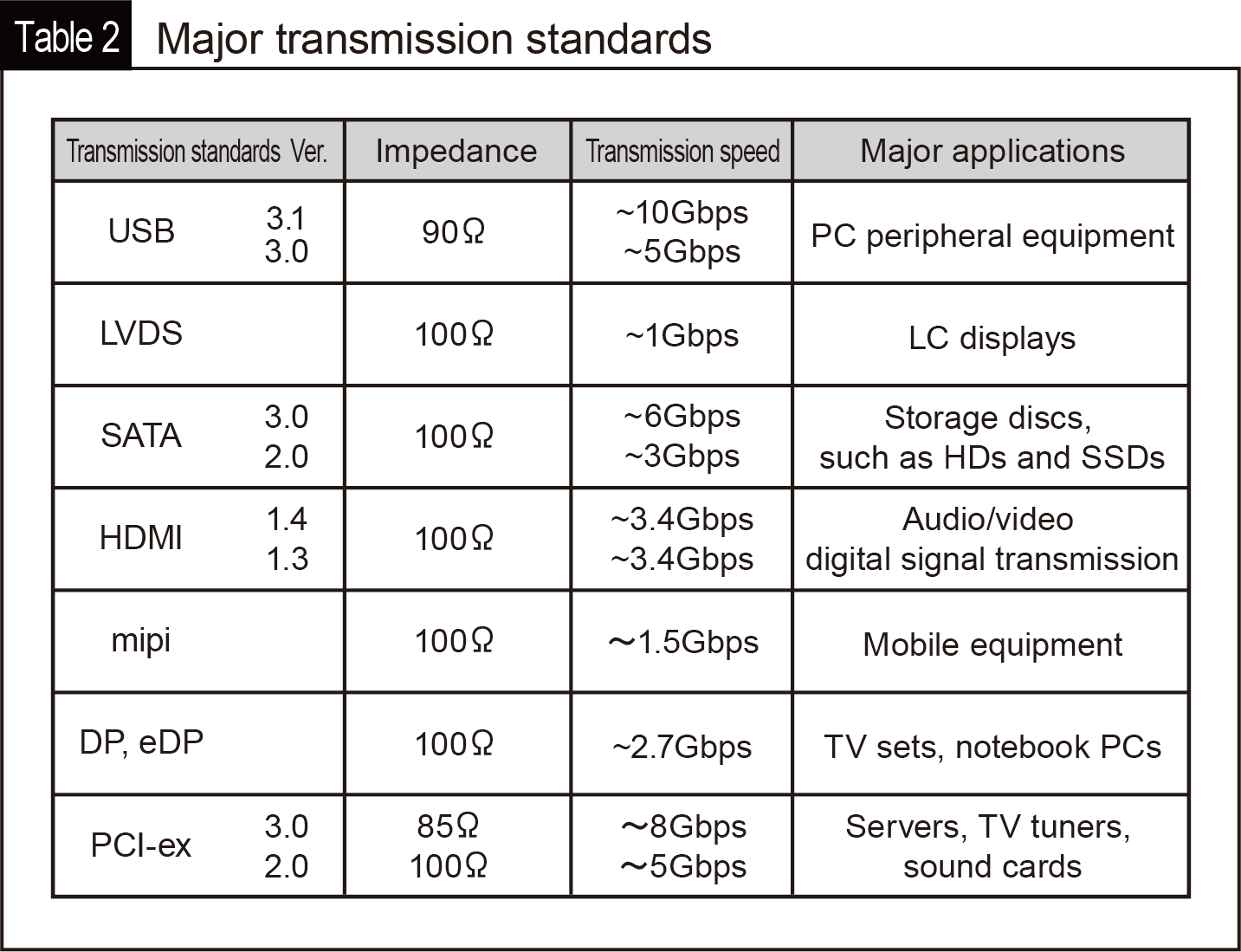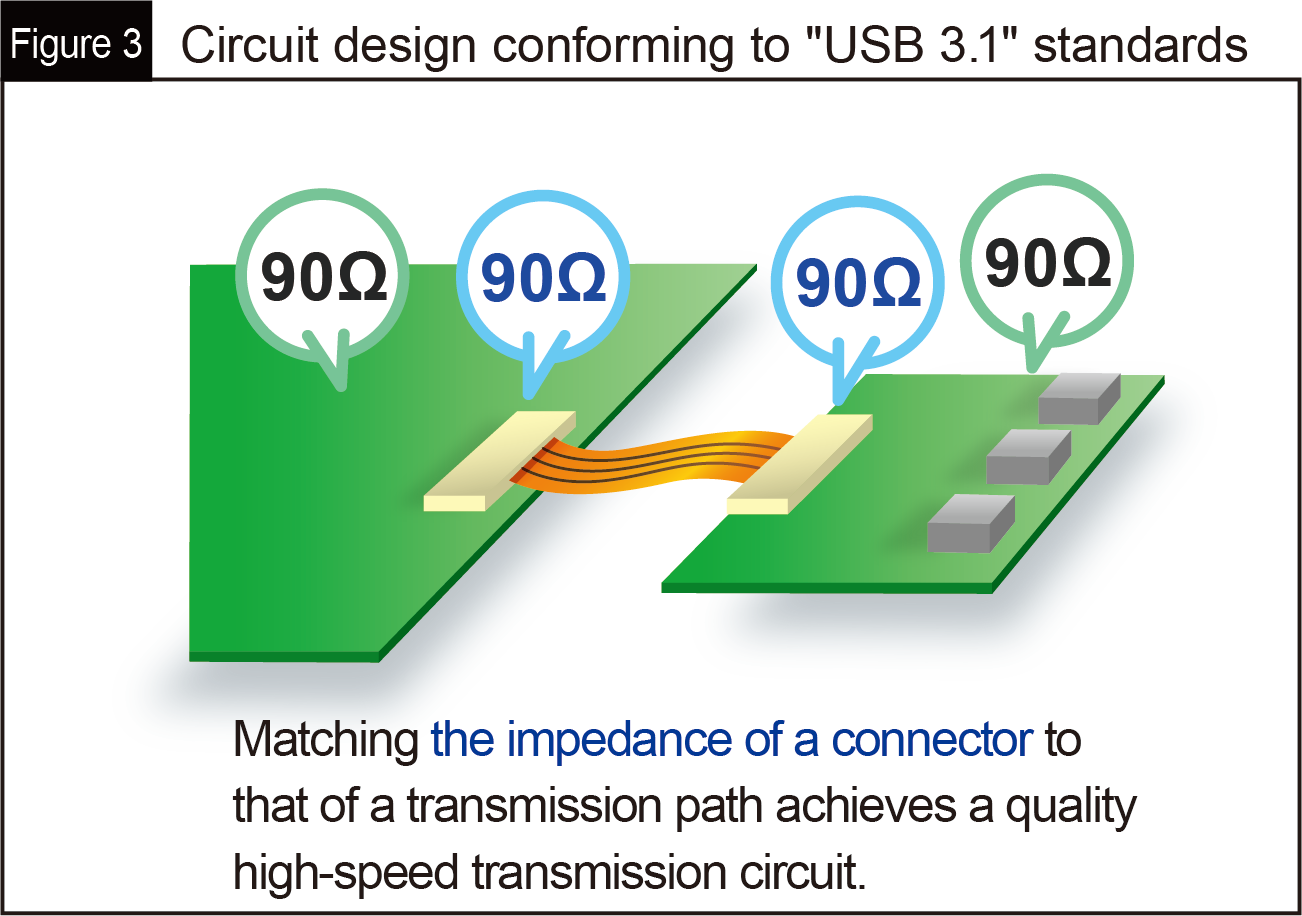In this article, we are going to explain about impedance. To achieve quality high-speed transmission or high-frequency transmission, impedance matching at the connectors is imperative.
Impedance is a quantity indicating the extent of difficulty for current to flow. It's a ratio between a voltage and a current and is expressed in ohms (Ω).
If we liken impedance to what happens in pipes carrying a water flow, as shown in Fig. 1 below, it may help you understand what impedance is.

Consider the pipe width to be an impedance value and water to be an electric signal.
Pipes of the same width allow water to flow smoothly, but pipes different in width disrupts the water flow.
If impedance values (pipe widths) do not match, the signal transmission (water flow) ends up disrupted, as indicated by the above Fig. 1.
Disrupted signal transmission means incorrect and slow signal transmission.
Table 2 shown below is a list of impedance values as defined in typical transmission standards, which were presented in the previous article.

In this manner, each set of transmission standards specify impedance values conforming to the standards. Matched impedance values on a transmission circuit improve its transmission characteristics. The higher the transmission speed specified by transmission standards, the severer the transmission characteristics are required by the standards. It is essential in such a case that the impedance of an even small component like a connector be matched.

Our impedance matching connector "Y4BH" is capable of matching to impedance values of 85 Ω, 90 Ω, and 100 Ω.
In quite a few cases where a transmission speed in a circuit is not so high, you may use an existing Board-to-board connector or FPC connector.
Let us know the size of the connector you intend to use, the transmission speed you need, and the standards you have to meet. Give us these pieces of information, and we will present to you products that best fit your purposes.
Well, in this article, we have explained to you impedance matching at connectors. We hope that what you've learned will serve as a basic knowledge of device design work.





